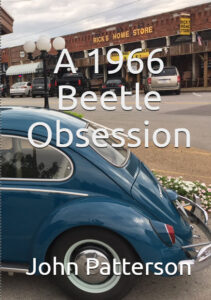The term ‘cult,’ which is related to ‘culture’ and ‘cultivate,’ originates from the Latin word ‘cultus.’ This noun has a variety of meanings, from ’tilling or cultivation’ to ‘training or education,’ and even ‘adoration.’
‘Culture’ refers to the lifestyle of a group of individuals—the behaviors, beliefs, values, and symbols that they adopt. Culture represents the collective mindset that differentiates the members of one group or category of individuals from others.
The pervasive car culture in America is undeniable. This is particularly evident when observing individuals who exclusively purchase brands like Ford, Chevy, or Dodge, which reflects the automotive culture they identify with. At car shows, vehicles are often categorized based on this culture, divided into subsets or classes. For instance, there are classifications such as Ford Trucks pre-1949, Ford Trucks 1949-1975, and Ford Trucks 1975-2000.

I certainly would fit into the Dodge Ram Culture, and I have owned Dodge Pickups since 1992. On the American side of the equation, I was a Chevy guy until we bought our first Dodge conversion Van in 1990. I was so impressed with it, that I became a “Dodge Guy”.
Obviously, my strongest emotional attachment has been to the VW Beetle, the 1966 model in particular. This was my first car. After that car was totaled in an accident in 1976, it wasn’t long after that I was driving a 1972 Super Beetle. It certainly wasn’t the same car my 1966 was, but it served us well. Eventually it succumbed to Wisconsin winters salt and rust and was not longer safe to drive.
At car shows I often hear a repetitive theme around the beetle stories. Almost everyone who had a beetle regrets having sold it. Of course, I didn’t sell either of my beetles, they just left me for the salvage yard. I missed having them for sure.
After a trip to Cozumel in 1999, Tammy and I rented an old VW Beetle. It was pretty much a wreck of a car. I actually had some concerns about whether we would make it around the whole island before it would fall apart on us. However, that experience lit a fire under me to return to my roots and find a 66 Beetle again. Shortly afterwards there would be a sea sand Beetle in our driveway. A few years later a nicer sea blue beetle would take its place. The VW culture for me, continued.
So, the Volkswagen Beetle which became the car of the hippy counterculture movement, was the first car to surpass 20 million units sold. The Beetle was truly the “people’s car” as it represented affordability, simplicity, and economy. It took the world by storm.
While VW has certainly moved on the from the classic Beetle, owners have not. The cult or culture continues to grow with folks rescuing and restoring vintage beetles all the time. Classic Beetle shows continue to exist throughout the country, as well as the vintage VW groups that support them. In addition, many YouTube channels exist just for classic beetle owners.
So, whether you think it’s a cult or a culture, you are right, it is. We don’t wear special clothes, or hold secret meetings, or swear any oaths. We just love our beetles.
